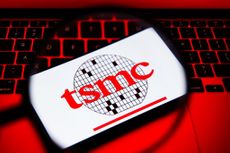The Best Way to Save for College
Changes in the tax law make state 529 plans an even better way to go. But be careful about paying the bills.

To hear the hype, you'd think that 529 savings accounts were the greatest invention since the GI Bill when it comes to covering college costs.
The hype is mostly right. The state-sponsored plans provide shelter from federal and state income taxes, give grandparents a good way to chip in for their grandkids' education, and do little damage to your chances for financial aid. In more than half of the states, they also deliver a state tax deduction or other tax benefits in exchange for your contributions.
| Row 0 - Cell 0 | Kiplinger's Picks for Top 529 Plans |
| Row 1 - Cell 0 | 529 Plans State-by-State |
| Row 2 - Cell 0 | Best Values in Colleges Center |
| Row 3 - Cell 0 | Search, Consolidate and Compare Student Loans |
So enticing are the programs that savers have finally awakened to their appeal. Assets in 529 plans totaled almost $97 billion at the end of the first quarter of 2007, up 30% compared with the same period in 2006, according to the College Savings Foundation. The average account balance approaches $12,000, which is about equal to the total cost of one year at a public college or university.

Sign up for Kiplinger’s Free E-Newsletters
Profit and prosper with the best of expert advice on investing, taxes, retirement, personal finance and more - straight to your e-mail.
Profit and prosper with the best of expert advice - straight to your e-mail.
Still, if you rely too heavily on 529s, you could end up with more money in the accounts than you have to pay in qualified college costs -- which would trigger the very tax you were trying to avoid. "The 529 is one great option, but it should be used in moderation," says Deborah Fox, of Fox College Funding, a network of financial planners.
Lots of pluses
Created by the section of the tax code that also gave life to prepaid-tuition plans, 529s let your savings grow tax-deferred and escape tax altogether if you use the money for qualified educational expenses, such as tuition, fees, books, and room and board. If your child takes a pass on higher ed, you can transfer the funds to another family member and preserve the tax benefits. Or you can withdraw the money yourself and pay income tax and a 10% penalty on the earnings. Unlike other education savings programs, 529s let families participate regardless of income, and the states set a high ceiling on contributions.
The plans also represent an opportunity to help the grandkids and move money out of your estate. You can put up to $12,000 annually into a 529 plan for each child (or $24,000 if your spouse joins in the gift) without incurring the federal gift tax. Or you can drop $60,000 ($120,000 per couple) into the account at one time and average the gift over five years. If one grandkid bails on college, no problem. You simply switch the money to another.
Parents don't have to worry that a 529 will seriously affect their financial-aid potential. The federal financial-aid formula assesses parent-owned accounts at 5.6%, a relatively painless hit compared with the 20% assessment on student savings. The federal financial-aid application (FAFSA) doesn't ask about grandparent-owned accounts at all.
Watch withdrawals
Starting next year, if a child has unearned income of more than $1,700 in a regular custodial account, it will be taxed at the parents' rate for dependent full-time students under age 24. That tightening of the "kiddie tax" rules makes custodial accounts less appealing and 529 plans all the more attractive.
But when it's time to take money out of your 529, make sure your withdrawals match up with qualified college expenses, says Rick Darvis, a certified college financial planner in Plentywood, Mont. If withdrawals exceed expenses, the portion of the excess that represents earnings are considered unearned income to the beneficiary -- your student -- and are taxed accordingly. "Before, it didn't make much difference because you didn't withdraw the money until the student was in college and the student's presumably lower tax rates applied," says Darvis. "Now, the kiddie tax applies during the college years."
[page break]
You can avoid the tax by withdrawing just enough to cover qualified costs. Before you can apply the withdrawals, however, you must subtract from the total any scholarships or other tax-free assistance your child receives, as well as expenses you've counted toward an education tax credit (see Best Ways to Cash in College Accounts).
Say your daughter scores a $5,000 scholarship, and her tuition and other expenses run $30,000. To calculate net qualified expenses, you subtract $5,000 from that $30,000. If you're taking the maximum Lifetime Learning credit, knock off another $10,000. Your qualified expenses now amount to $15,000.
Withdraw more than that and you trigger the tax on the part of the excess that represents earnings. (Uncle Sam takes pity on people in these circumstances and does not impose the 10% penalty.) You could use other savings to offset scholarships and tax credits, but, says Fox, "if you have saved only in a 529 plan, the net calculation comes back to bite you."
Chris Spence, a chiropractor in San Diego, and his wife, Suzanne, plan to hedge their bets by setting up several accounts in which to stash college savings for their 18-month-old daughter, Ava. They have invested in Virginia's CollegeAmerica 529 plan, and for flexibility they will also invest in a noneducational, tax-efficient account in their name. If anything remains in the tax-efficient account once the college bills are paid, says Spence, "we can use it for Ava or for ourselves -- who knows?"
Choose your plan
You don't have to open a 529 plan in your home state. A total of 49 states and the District of Columbia offer 529s. (Wyoming has adopted the Colorado plan as its own, and Washington offers only a prepaid plan.) Most states let you choose between accounts that you can invest in directly and portfolios that you can purchase only through advisers or brokers. More than half of 529 investors buy broker-sold plans, which carry sales charges and offer more investment options. But you can find an adequate selection in a direct-sold plan -- and the lower expenses mean that more of your money will go toward building your college kitty (see Kiplinger's favorite 529 plans).
Both types of plans rely heavily on off-the-shelf portfolios of mutual funds, and age-based portfolios are by far the most popular. That is, as your child approaches 18, the ratio of stock mutual funds to bond funds automatically becomes more conservative, stabilizing your returns as the college bills come due. Other portfolios offer a fixed mix of stock and bond funds. You may also be able to choose among individual funds -- say, a foreign-stock fund or a sector fund that specializes in real estate. Nearly all 529s offer an interest-bearing option, some of which carry a minimum guaranteed return.
If you don't like the preset choices in your 529, you can mix and match options to strike the right balance between stocks and bonds. But most 529 investors go with one of the ready-made portfolios. Once you've settled on a mix, you'll have to stick with it, at least for a while. You can change your investment selections only once a year.
Grab a tax deduction
In the early years, 529s had a deserved reputation for charging high fees. But fees have fallen as more money flows into the plans and states negotiate with investment companies for lower costs. States usually exact an annual administrative fee plus yearly expenses for portfolio and fund options. To simplify matters, some plans now charge a flat annual fee that includes both administrative costs and the expenses of the underlying investments.
Don't focus on fees, however, before you find out if your home state offers a tax deduction for contributions. That's the case in 31 states and the District of Columbia. (There's no federal income-tax deduction for contributions to 529 plans.)
Selecting a low-fee plan out of state over an in-state deduction can be injudicious, even for a member of the U.S. Supreme Court. According to public-disclosure records, Chief Justice John Roberts, a Maryland resident, went with Utah's 529 plan instead of Maryland's direct-sold plan, which gives residents a deduction. Even if he had invested in the Maryland plan's priciest option, Roberts would have garnered a $48-a-year tax break on a $1,000 deduction, which beats the $7 a year he saves in fees by going with the lowest-cost option in Utah's plan. You can switch 529 plans, but only once a year.
Cashing out
Getting money out of your 529 account is simple, says Bruce Harrington, of MFS Investment Management, which manages the Oregon plan. "All you need to do is fill out a fairly basic form to tell the program manager how much you want to take out and who's getting it." The plan distributes the money to the college, to you or to the beneficiary, depending on your instructions. At the end of the calendar year, the school sends you a form that spells out the qualified expenses. In January, you also get a form from the 529 program outlining your distributions.
In the past, you had to prove that your expenditures actually went to cover educational costs. "We'd get tuition bills, rent bills, food bills, even McDonald's receipts," says Harrington. Now, the honor system applies. It's up to you or your tax preparer to match expenses with withdrawals, subtract tax-free assistance and file taxes accordingly. Be sure to match withdrawals with expenses incurred during the tax year, not the academic year. If you did withdraw too much, you can return the excess within 60 days and apply it to next year's costs.

-
 Why Taiwan Semiconductor Stock Is Falling After Earnings
Why Taiwan Semiconductor Stock Is Falling After EarningsTaiwan Semiconductor beat expectations for the first quarter but its stock is notably lower. Here's why.
By Joey Solitro Published
-
 Strategies to Optimize Your Social Security Benefits
Strategies to Optimize Your Social Security BenefitsTo maximize what you can collect, it’s crucial to know when you can file, how delaying filing affects your checks and the income limit if you’re still working.
By Jason “JB” Beckett Published
-
 403(b) Contribution Limits for 2024
403(b) Contribution Limits for 2024retirement plans Teachers and nonprofit workers can contribute more to a 403(b) retirement plan in 2024 than they could in 2023.
By Jackie Stewart Published
-
 Roth IRA Contribution Limits for 2024
Roth IRA Contribution Limits for 2024Roth IRAs Roth IRA contribution limits have gone up for 2024. Here's what you need to know.
By Jackie Stewart Published
-
 Four Tips for Renting Out Your Home on Airbnb
Four Tips for Renting Out Your Home on Airbnbreal estate Here's what you should know before listing your home on Airbnb.
By Miriam Cross Published
-
 Five Ways to a Cheap Last-Minute Vacation
Five Ways to a Cheap Last-Minute VacationTravel Procrastinator? No matter. You can pull off a fun and memorable getaway on a moment's notice — without breaking the bank.
By Vaishali Varu Last updated
-
 How Much Life Insurance Do You Need?
How Much Life Insurance Do You Need?insurance Instead of relying on rules of thumb, you’re better off taking a systematic approach to figuring your life-insurance needs.
By Kimberly Lankford Published
-
 When Is Amazon Prime Day?
When Is Amazon Prime Day?Amazon Prime In 2023 Amazon had two Prime Day events — one in July and another, called Big Deal Days, in October. We expect 2024 to follow the same schedule.
By Bob Niedt Last updated
-
 How to Shop for Life Insurance in 3 Easy Steps
How to Shop for Life Insurance in 3 Easy Stepsinsurance Shopping for life insurance? You may be able to estimate how much you need online, but that's just the start of your search.
By Kaitlin Pitsker Published
-
 5 Ways to Shop for a Low Mortgage Rate
5 Ways to Shop for a Low Mortgage RateBecoming a Homeowner Rates are high this year, but you can still find an affordable loan.
By Daniel Bortz Published